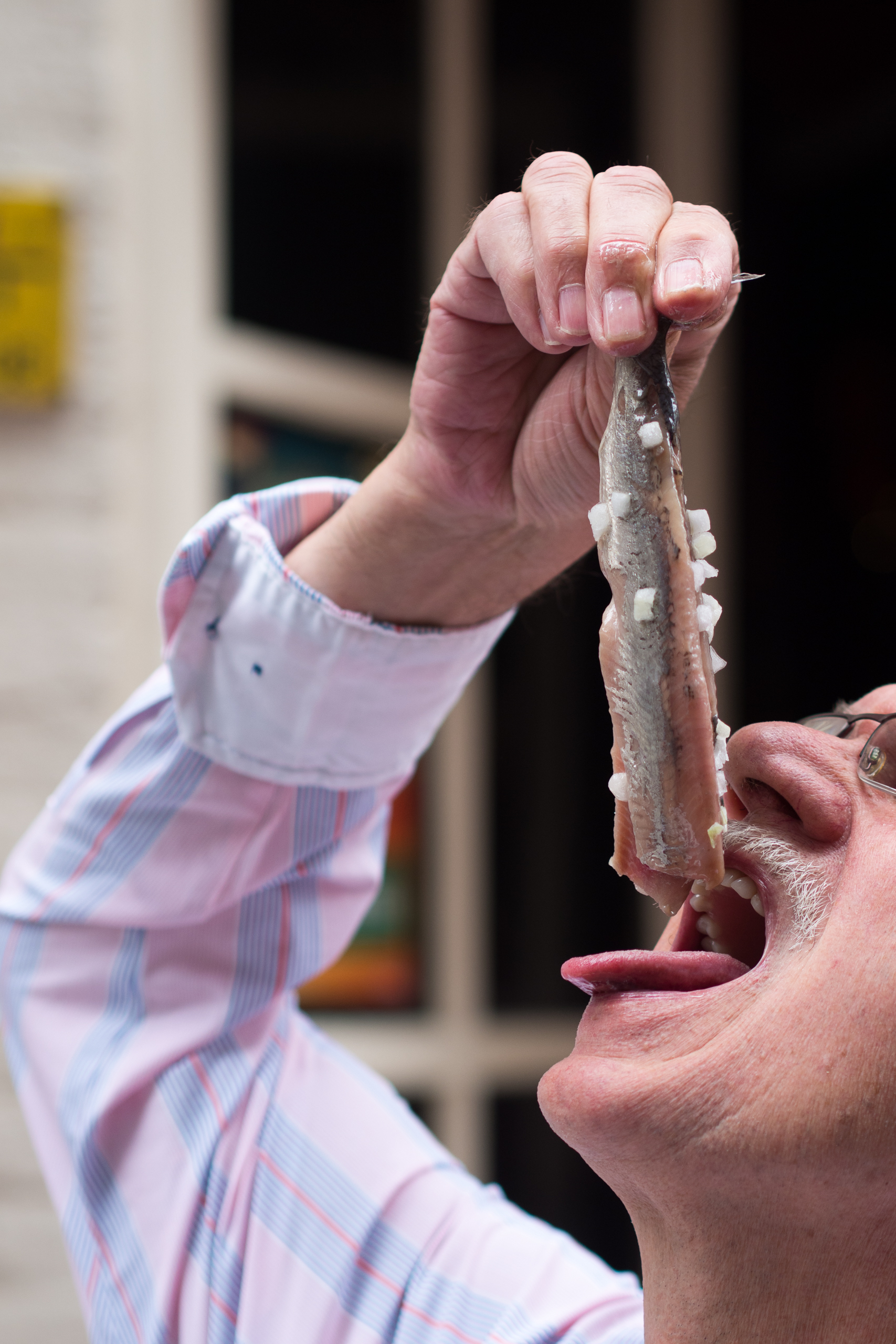|
Gevulde Koek
("filled cake") is a Dutch pastry, consisting of a rich almond paste filling encased in buttery shortcrust pastry. Typically around 10 cm in diameter, it is often decorated with 1–5 whole or halved almonds atop. The number of almonds can signal quality, artisan bakers tend to use more almonds than mass-produced versions. The almond paste found in artisanal or in-store bakery products use a blend of ground almonds, sugar, egg yolk, and lemon zest. In contrast, mass-produced supermarket packages frequently use cheaper persipan, a pastry paste that may include vegetable fats, sugar, apricot kernels, or legume pastes instead of real almonds. History The use of almond paste in Dutch cuisine dates back to the early 16th century: a Dutch recipe from Brussels in around 1510 mentions almond paste, indicating early origins of enriched pastries. The origins of the round, filled cookie as known today is not precisely known. Since then, it has become a staple of Dutch bakery culture, r ... [...More Info...] [...Related Items...] OR: [Wikipedia] [Google] [Baidu] |
Almond Paste
Almond paste is made from ground almonds or almond meal and sugar in equal quantities, with small amounts of cooking oil, eggs, heavy cream or corn syrup added as a binder. It is similar to marzipan, with a coarser texture. Almond paste is used as a filling in pastries, but it can also be found in chocolates. In a type of commercially manufactured almond paste called persipan ground apricot or peach pits are added to save money. Uses Almond paste is used as a filling in pastries of many different cultures. It is a chief ingredient of the American bear claw pastry. In the Nordic countries almond paste is used extensively, in various pastries and cookies. In Sweden (where it is known as mandelmassa) it is used in biscuits, muffins and buns and as a filling in the traditional Shrove Tuesday pastry semla and is used in Easter and Christmas sweets. In Denmark (where it is known as marcipan or mandelmasse), almond paste is used in several pastries, for example as a filling in the Da ... [...More Info...] [...Related Items...] OR: [Wikipedia] [Google] [Baidu] |
Persipan
Persipan (from ''Persicus'' (peach) and ''marzipan''; also known as Parzipan) is a material used in confectionery. It is similar to marzipan but, instead of almonds, is made with apricot or peach kernels. Persipan consists of 40% ground kernels and 60% sugar. The kernels have a strong bitter flavour caused by the presence of amygdalin, a toxic cyanogenic glycoside which has to be detoxified before the kernels can be used. The cores are normally not used otherwise, originally making persipan lower-priced than marzipan. It also has a somewhat different taste. Persipan often contains 0.5% starch so that it can be easily differentiated from marzipan with an iodine test. Persipan is generally used in confectionery in place of marzipan and as an ingredient of pastry Pastry refers to a variety of Dough, doughs (often enriched with fat or eggs), as well as the sweet and savoury Baking, baked goods made from them. The dough may be accordingly called pastry dough for clarity. Sweete ... [...More Info...] [...Related Items...] OR: [Wikipedia] [Google] [Baidu] |
Brussels
Brussels, officially the Brussels-Capital Region, (All text and all but one graphic show the English name as Brussels-Capital Region.) is a Communities, regions and language areas of Belgium#Regions, region of Belgium comprising #Municipalities, 19 municipalities, including the City of Brussels, which is the capital of Belgium. The Brussels-Capital Region is located in the central portion of the country. It is a part of both the French Community of Belgium and the Flemish Community, and is separate from the Flemish Region (Flanders), within which it forms an enclave, and the Walloon Region (Wallonia), located less than to the south. Brussels grew from a small rural settlement on the river Senne (river), Senne to become an important city-region in Europe. Since the end of the Second World War, it has been a major centre for international politics and home to numerous international organisations, politicians, Diplomacy, diplomats and civil servants. Brussels is the ''de facto' ... [...More Info...] [...Related Items...] OR: [Wikipedia] [Google] [Baidu] |
Speculaas
Speculaas (; ; ) is a type of spiced shortcrust biscuit originated in the Low Countries (Belgium and the Netherlands) and baked with speculaas spices, which is a mix of 80% cinnamon, and 20% other spices: nutmeg, clove, ginger, cardamom and pepper, the exact proportions were often a signature and secret of the bakery who made them. They are usually flat, crisp and moulded to carry certain traditional images. Historically it was popular to eat speculaas around the feast of Saint Nicholas (Dutch: ''Sinterklaas''). The oldest sources on speculaas also mention weddings and fairs. However, in the Low Countries it has become normal to eat speculaas all year round, especially with coffee or tea, or with ice cream. Although speculaas stuffed with almond paste (Dutch: ''gevulde speculaas'') and the thicker speculaas chunks (Dutch: ''speculaasbrokken'') remain a specialty of the holiday season. Apart from Belgium and the Netherlands, it is also well known in adjacent areas in Luxembo ... [...More Info...] [...Related Items...] OR: [Wikipedia] [Google] [Baidu] |
Sinterklaas
Sinterklaas () or Sint-Nicolaas () is a legendary figure based on Saint Nicholas, patron saint of children. Other Dutch names for the figure include ''De Sint'' ("The Saint"), ''De Goede Sint'' ("The Good Saint") and ''De Goedheiligman'' (derived from ''goed hylickman'' meaning "good marriage man", alluding to his historical reputation as a Saint who can help you find a good life partner). Many descendants and cognates of "Sinterklaas" or "Saint Nicholas" in other languages are also used in the Low Countries, nearby regions, and former Dutch colonies. The feast of Sinterklaas celebrates the Saint Nicholas Day, name day of Saint Nicholas on 6 December. The Sinterklaas feast is celebrated annually with the giving of gifts on St. Nicholas' Eve (5 December) in the Netherlands and on the morning of Saint Nicholas Day (6 December) in Belgium, Luxembourg, western Germany, and northern France (French Flanders, Lorraine, Alsace and Artois). The tradition is also celebrated in some territ ... [...More Info...] [...Related Items...] OR: [Wikipedia] [Google] [Baidu] |
Dutch Confectionery
Dutch or Nederlands commonly refers to: * Something of, from, or related to the Netherlands ** Dutch people as an ethnic group () ** Dutch nationality law, history and regulations of Dutch citizenship () ** Dutch language () * In specific terms, it reflects the Kingdom of the Netherlands ** Dutch Caribbean ** Netherlands Antilles Dutch may also refer to: Places * Dutch, West Virginia, a community in the United States * Pennsylvania Dutch Country People Ethnic groups * Pennsylvania Dutch, a group of early German immigrants to Pennsylvania Specific people * Dutch (nickname), a list of people * Johnny Dutch (born 1989), American hurdler and field athlete * Dutch Schultz (1902–1935), American mobster born Arthur Simon Flegenheimer * Dutch Mantel, ring name of American retired professional wrestler Wayne Maurice Keown (born 1949) * Dutch Savage, ring name of professional wrestler and promoter Frank Stewart (1935–2013) Arts, entertainment, and media Fictional characters * ... [...More Info...] [...Related Items...] OR: [Wikipedia] [Google] [Baidu] |
Dutch Cuisine
Dutch cuisine is formed from the cooking traditions and practices of the Netherlands. The country's cuisine is shaped by its location on the fertile Rhine–Meuse–Scheldt delta at the North Sea, giving rise to fishing, farming, and overseas trade. Due to the availability of water and flat grassland, the Dutch diet contains many dairy products such as butter and List of Dutch cheeses, cheese. The court of the Burgundian Netherlands enriched the cuisine of the elite in the Low Countries in the 15th and 16th century, so did in the 17th and 18th century colonial trade, when the Dutch ruled the spice trade, played a pivotal role in the global spread of coffee, and started the modern era of chocolate, by developing the Dutch process chocolate. In the late 19th and early 20th centuries, Dutch food and food production became designed to be efficient, which was so successful that the country became the world's second-largest exporter of agricultural products by value behind the United St ... [...More Info...] [...Related Items...] OR: [Wikipedia] [Google] [Baidu] |




